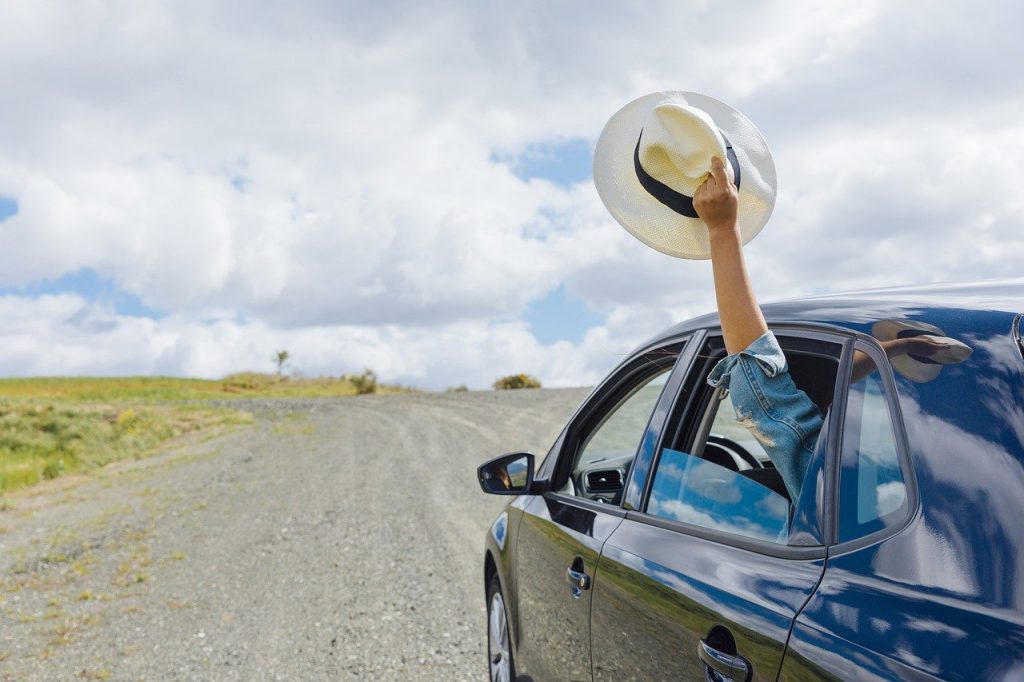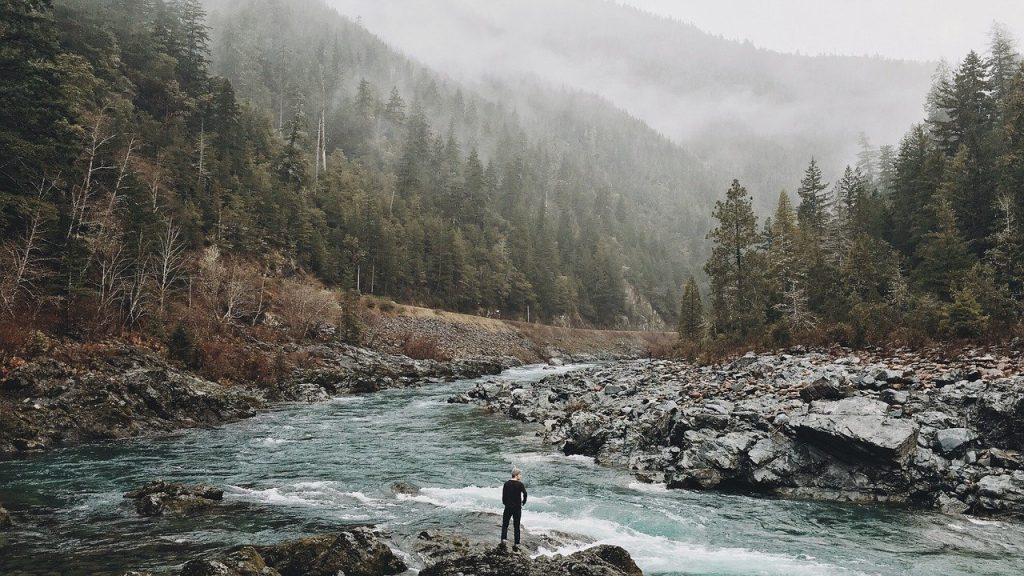Do you enjoy observing nature and people through a wide-angle, telescopic, fixed, or fish-eye lens? Perhaps it is worthwhile to consider pursuing a career in the travel industry.
To be a successful travel photographer, you must have a strong desire to travel as well as the desire to share your joy while on a trip. Also, be prepared to observe, investigate, and reflect on the composition.
20 Simple Steps to Become a Travel Photographer
To make a living as a travel photographer, you must do more than just visit unusual locations and press the shutter. When developing your career and creating a photo composition, you will need to be patient.
Aside from managing hectic schedules, you must be skilled enough to successfully market your services. It is necessary to have an artistic approach as well as the proper camera equipment.
1. Set Your Goals
If you want to become a travel photographer, you must first determine your goals. To figure out which goals you want to achieve, ask yourself some questions.
- Are you going to do a shoot for National Geographic?
- Do you intend to open your own gallery in the near future?
- Or are you entirely focused on running your blog?
Consider which activities you would like to engage in to help you get started in the right direction.
2. Learn Photography from the Basics
It is not enough to buy a professional camera and a plane ticket if you want to work as a travel photographer. You must understand what camera settings are appropriate for shooting landscapes, as well as what exposure to use when photographing at sunrise.
Beginners can improve their skills by enrolling in online photography classes. You can find a short tutorial that covers a specific topic or enroll in full expert-led training. For example, a National Geographic photographer’s course will teach you how to capture captivating travel images that will leave your audience speechless.
You can take both free and paid courses. If you are on a budget, you can watch basic training videos on YouTube. If you like to learn from books, you can look for the ones written by experienced travel photographers.
3. Learn Other Photographers’ Styles
Learning from master is the best way to discover something new and useful. While studying the works of professionals such as Paul Nicklen, Blake Gordon, Stephanie Sinclair, Palani Mohan, and Maggie Steber, you will undoubtedly learn something new.
4. Find your Niche

When you find your niche and adhere to a specific genre, technique, and approach when practicing travel photography, you will undoubtedly develop your own distinct style.
Underwater photography, aerial and drone photography, architectural photography, urban photography, portrait photography, landscape photography, and nature photography are some of the most popular photography niches.
5. Learn How to Quickly Improve Photos
Check out the most widely-used editing steps that any traveling photographer should know:
Radial filtering. If you want to emulate a strong light source, you can invert the mask and then increase the exposure and highlights of the radial filter. I usually use high feathering to produce a soft light in an image.
Graduated filtering. You can use this technique to make your shots deeper, draw viewers’ attention to the focal point and eliminate a feeling that you are missing out on something fundamentally important.
Tone curve. Photographers who work with the tone curve call this process ‘crushing the blacks’. To use this technique, you need to drag the bottom left point to the right. After that, it is necessary to take the very end of the line at the point where it meets the left corner and drag it up on the vertical axis.
HDR. This feature is integrated into the camera. It involves shooting bracketed exposures by taking multiple shots of the same scene. The camera automatically changes the shutter speed with each different bracket to create different exposures. Choose the HDR mode in your camera. Once you import your pictures to Lightroom, you can easily combine them by clicking Photo Merge: HDR.
Color correction. Carefully examine your photo to determine which colors are displayed appropriately, and which ones appear desaturated. Instead of increasing the saturation of each color, choosing two or three closely related colors for enhancement (such as orange and teal) makes a big difference.
6. Build a Portfolio
To learn how to become a traveling photographer, you must first create a professional portfolio. Whether you want to attract new clients or apply for a job, you should provide a photography portfolio to demonstrate your skills.
A portfolio can be created using a couple of tried-and-true methods. It is possible to show your work in the form of a PDF file. As a result, you can easily send it to potential clients or HR specialists via email or messenger. When working with PDF files, it is best to use Adobe Acrobat.
You can also share your photos on sites like SmugMug, 500px, Zenfolio, and Squarespace.
7. Find Clients
To learn how to become a traveling photographer, you must first create a professional portfolio. Whether you want to attract new clients or apply for a job, you should provide a photography portfolio to demonstrate your skills.
A portfolio can be created using a couple of tried-and-true methods. It is possible to show your work in the form of a PDF file. As a result, you can easily send it to potential clients or HR specialists via email or messenger. When working with PDF files, it is best to use Adobe Acrobat.
You can also share your photos on sites like SmugMug, 500px, Zenfolio, and Squarespace.
- Visit job websites and freelance platforms, like Simply Hired, Upwork, and Freelancer.
- Collect networking contacts.
- Visit different events related to photography.
8. Create Your Website or Blog
You can showcase your talent by running a website or a travel photography blog. You can run a blog even if you don’t know how to write text. Just concentrate on your photos and keep the words to a minimum.
After you’ve uploaded photos to your website, you can use Google Analytics and other tools to promote them in search engines and track analytics. If you want to create a good website, you should use a good photography website builder.
9. Build Your Social Media Presence
On social media for photographers, you can also showcase your work, tell travel stories, and build your personal brand. Create an Instagram account, share your photos, and tag them so that users in your area can see what you’ve captured. Your photos can also be shared on Behance, Facebook, and Pinterest.
Tips on how to work on social media:
- Don’t upload each photo you have. Create a list of pictures you are going to share.
- Study your audience and add relevant hashtags.
- Tag important channels, hotels, tourism boards, or tour agencies.
- Engage your audience: ask questions in your posts, respond to comments and check out other photographers.
10. Publish Your Photos in the Magazine
If you want to advance your travel photography career, consider publishing your work in a magazine. It is necessary to research the style of other photographs in this magazine, the number of images you can publish, and the photographers whose work frequently appears on the pages. After that, send an email to the editor outlining your ideas. You can include a link to your portfolio so that the editor can review it.
Choose from magazines such as Outdoor Photographer, Black and White Photography, Dwell, and F-Stop. Remember that the majority of the photos you see in popular magazines were published for free. Nonetheless, this is a fantastic way to promote your photography services and add new pieces to your portfolio.
11. Pick the Right Camera
Any camera can capture the excitement of a new adventure. If you intend to do professional photography, you should invest in a DSLR or a mirrorless camera. Your camera should be able to switch between different exposures and shoot in low-light situations. Most importantly, consider investing in lightweight and portable camera equipment that you can easily transport.
If you want to become a travel photographer, consider the following camera models:
- Fujifilm X-T2 — Premium DSLR camera with APS-C sensor which costs from about $1,199.
- Olympus OM-D E-M1 Mark II — Top-notch image quality with the price tag from about $949.
- Panasonic Lumix GX85 — 4K photo shooting for about $697.99.
12. Experiment with Lenses
Different travel lenses allow you to experiment with various photography styles. Wide-angle lenses are ideal for landscape photography, whereas telephoto lenses allow you to capture even the smallest details.
In my opinion, the following are the best lenses:
Here ar
- Canon EF 16–35mm — Allows experimenting with different styles. It costs about $2,199.
- Olympus M.Zuiko Digital ED — Super-wide zoom for about $1,299.
- Nikon AF-S DX NIKKOR — Great autofocus. The lens costs about $319
13. Look for a Little Pocket-Sized Tripod
A travel tripod is an essential piece of equipment for any photographer. Consider purchasing a small pocket-sized tripod or one that can be carried on a plane.
Full-sized tripods are heavy and bulky, making them difficult to transport on trips. If you require a large tripod, look for one that has expandable arms and an aluminum body. The top two tripods are:
- Gitzo GIGT1545T Traveler — The best portable tripod with the price tag of $444.
- MeFOTO Globetrotter — Allows you to switch between tripod and monopod. Costs $391.59
14. Take Care of Additional Hardware
Whatever type of photography you specialize in, you will most likely require flashes, a gimbal, and other equipment. Drones are even used by some photographers when they travel. Aside from a camera, lens, and tripod, you will also require the following items:
- Card readers and storage cards
- Batteries and chargers for batteries
- Filtering
- Cleaning kit for camera lenses
5th. Camera case - Camera rain sleeve and rain sleeve
- Laptop for travel
15. Shoot at Golden Hour
The best time to take travel photos is just after sunrise or before sunset. You can photograph the city as it changes from empty streets to open shop windows and bustling sidewalks. Document how locals go home or have fun in the bars after work.
Apps such as Alpenglow for iOS and Photo time for Android smartphones can be used to determine golden hours.
16. Scout Your Locations
Before shooting, if possible, go to the location. It’s especially helpful if you’ve never been before. If you are physically capable of scouting your location, arriving at the desired location, and exploring the area.
Take a few test photos and make a note of the important details. To quickly jot down your thoughts, use dedicated note-taking apps like Evernote, Notion, and OneNote. These products are available for both the iOS and Android operating systems.
Don’t be concerned if you are unable to explore the location prior to the photoshoot. You can look through the photos of any traveling photographer who has previously visited this location on the internet. It is also possible to watch videos of travel vloggers to learn about the unique features of a specific location.
17. Earn on Photography Stock Libraries
Stock libraries can help you make money. Some websites, however, may only pay 10 cents for a photo. Nonetheless, there are stock photography websites that provide pricing guidelines that are in line with industry standards. Adobe Stock, Shutterstock, and Pexels are the best stock libraries.
Many of these platforms provide high-quality photos. You will be paid a commission if your photograph is sold. Although it is not a large sum of money, it is a good way to supplement your income. Popular location images are in high demand on these websites.
18. Traveling for Free

Traveling for free in exchange for digital content is a fantastic way to become a freelance photographer, meet new and interesting people, take spectacular photos, and save money.
If you are just starting out in travel photography and want to expand your portfolio, you can approach organizations like the Adventure Travel Trade Association (ATTA) and the American Society of Travel Agents (ASTA), as well as hotels and hostels, and ask for hosting in exchange for your shots. You will be provided with a place to stay and a meal, while they will be provided with photographs to promote their business.
19. Organize Photo Trips
You could try organising photo tours. The primary goal of such trips is to bring together like-minded people in search of the most vibrant landscapes, rare natural phenomena, and vibrant local culture to document.
The cost of a trip will vary depending on the destination and the photographers’ level of expertise. The most difficult aspect of organizing photo trips is making them legal and preparing the necessary documentation because the requirements vary by region.
20. Sell Your Prints

You can sell prints of your photos on your website or social media platform. Local art festivals and boutiques are excellent places to showcase your talents and earn money. You can even start a small business by selling your photos on items like pillows, mugs, magnets, and T-shirts.
Note: If you want to make some adjustments to the photo just let me know. I can do it for you at a very low cost. You can hire me to edit your photo.
LATEST POST
- What is Midjourney
 Discover the capabilities of Midjourney AI, learn how to effectively utilize the platform, and explore the advantages and disadvantages of the Midjourney AI image generator across its different pricing options.
Discover the capabilities of Midjourney AI, learn how to effectively utilize the platform, and explore the advantages and disadvantages of the Midjourney AI image generator across its different pricing options. - Brand identity elements
 In the vast marketing universe, imagery is pivotal in establishing and nurturing a brand’s identity. A brand’s visual choices are not merely aesthetic decisions but strategic moves that can significantly influence perception and performance. This Picfixs article explores the intricacies of selecting imagery that complements and enhances a brand’s essence, ensuring it resonates with the… Read more: Brand identity elements
In the vast marketing universe, imagery is pivotal in establishing and nurturing a brand’s identity. A brand’s visual choices are not merely aesthetic decisions but strategic moves that can significantly influence perception and performance. This Picfixs article explores the intricacies of selecting imagery that complements and enhances a brand’s essence, ensuring it resonates with the… Read more: Brand identity elements - 100 Best Mountain Captions and Mountain Quotes for Instagram
 Ready to scale new social media heights? Look no further than this treasure trove of 100 exhilarating captions and quotes, handpicked for your Instagram mountain posts!
Ready to scale new social media heights? Look no further than this treasure trove of 100 exhilarating captions and quotes, handpicked for your Instagram mountain posts! - Symmetry in Photography: A Creative Approach with Examples
 Delve into the enchanting realm of symmetry in photography as we showcase mesmerizing examples on our website. Experience the allure of perfectly mirrored images!
Delve into the enchanting realm of symmetry in photography as we showcase mesmerizing examples on our website. Experience the allure of perfectly mirrored images! - 11 Quarantine Photoshoot Ideas to Try at Home for Amazing Photos
 Looking for unique photoshoot ideas during quarantine? Explore the 11 creative suggestions that will help you capture unforgettable moments at home.
Looking for unique photoshoot ideas during quarantine? Explore the 11 creative suggestions that will help you capture unforgettable moments at home.


